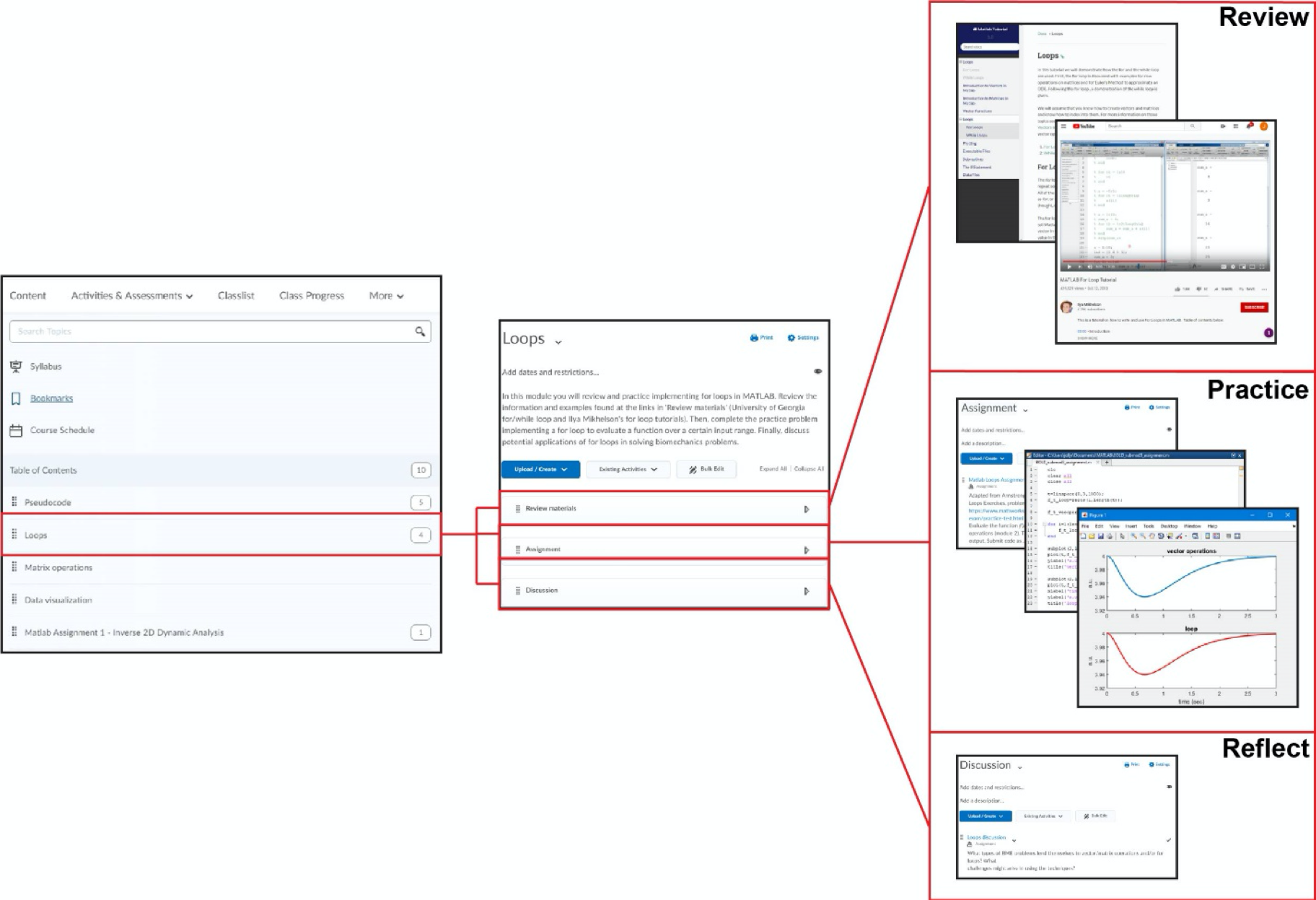BME2100: Musculoskeletal Biomechanics
 Ethan Joll working with
Ethan Joll working with
Dave Merryman, Professor of Biomedical Engineering
Overview
BME2100: Introductory Biomechanics is one of the first major-specific courses BME undergraduates take at Vanderbilt. Students learn standard engineering concepts in Newtonian mechanics, statics, and strength of materials and apply these principles to biomedical applications such as bone, muscle, biomaterials, and medical devices. 40-50 students take this course during their sophomore year. In addition to pen and paper problem assignments, two MATLAB programming assignments have also been developed in a department-wide effort to better develop undergraduate coding skills to address industry needs. Dr. Merryman, along with several other BME faculty, have regularly taught this course for many years.
Problem
Since the introduction approximately five years ago, the MATLAB programming projects are constantly cited by students as one of the most challenging and frustrating parts of the course. Specifically, students seem overwhelmed by what they consider a jarring shift in focus from standard written physics assignments to a complex coding assignment. Despite taking a 3 credit-hour programming course in their Freshman year, students find the content overwhelming and difficult to recall the knowledge developed in their first year.
Approach
We decided to use a blended approach to delivering MATLAB content over the course of the semester leading into the assignment of the coding project during the sixth week of class. This is in contrast with the previous method of one traditional style lecture class dedicated to introducing the assignment and coding concepts.
The concepts of the assignment previously introduced in a lecture format (pseudocode, vector/matrix operations, loops, and data visualization) were transformed into four online modules, hosted in the course Brightspace site (fig. 1). Each module had a similar structure: review materials, mini-assignment, and a reflective prompt. Modules were assigned weekly.
Figure 1. MATLAB review Brightspace modules
After the final module was completed, the MATLAB project was assigned. In an effort to address previous students concerns that the description and objective of the assignment was hard to understand, we also re-formulated the assignment delivery from a text and image style to a video (fig. 2).
Traditional |
|
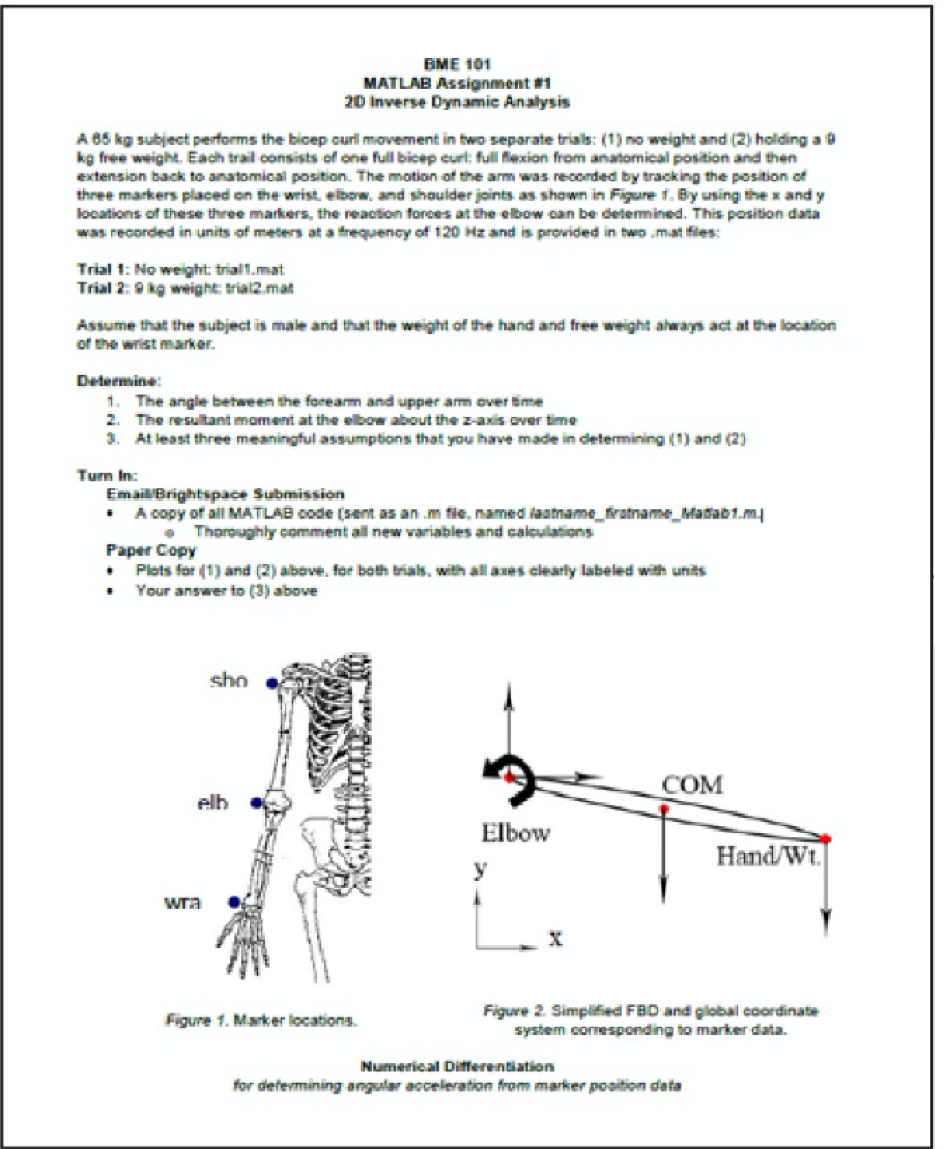 |
Blended |
Figure 2. Paper assignment was converted to online video in blended class
Students were given one week to complete the assignment. Modules were graded based on completion. The grading of the project was done by the course teaching assistant. Modules were completed by the majority of the class. Two of the four modules were 100% completed while the others were completed by more than 90% of students. 100% of students completed the project (table 1).
 Table 1. Blended class module and project completion percentages
Table 1. Blended class module and project completion percentages
Assessment
We aimed to answer the following questions comparing traditional vs. blended MATLAB programming content delivery in a biomechanics course:
- Do the modules and assignment improve student coding confidence?
- Does a blended class improve coding confidence over a traditional class?
- Does a blended class improve coding competence over a traditional class?
- Do the students find blended class effective in helping them learn?
Coding confidence
Previously, students felt the assignment was too overwhelming. While they had a foundation of programming knowledge, being asked to recall what they learned in their first year for a complex coding assignment was quite difficult. First, we wanted to probe how students perceived their overall confidence coding in MATLAB. Additionally, we were interested to know if student’s confidence changed in their specific skills applying the fundamental concepts the assignment is meant to test: pseudocode, matrix/vector operations, loops, and data visualization. To accomplish this, we created a survey using a 5-point Likert scale style asking students their confidence implementing certain MATLAB coding concepts (fig. 3). This survey was administered via Google Forms and was performed anonymously or, in the blended class, students were given unique identification keys in order to track their responses pre- and post- module and programming assignment.
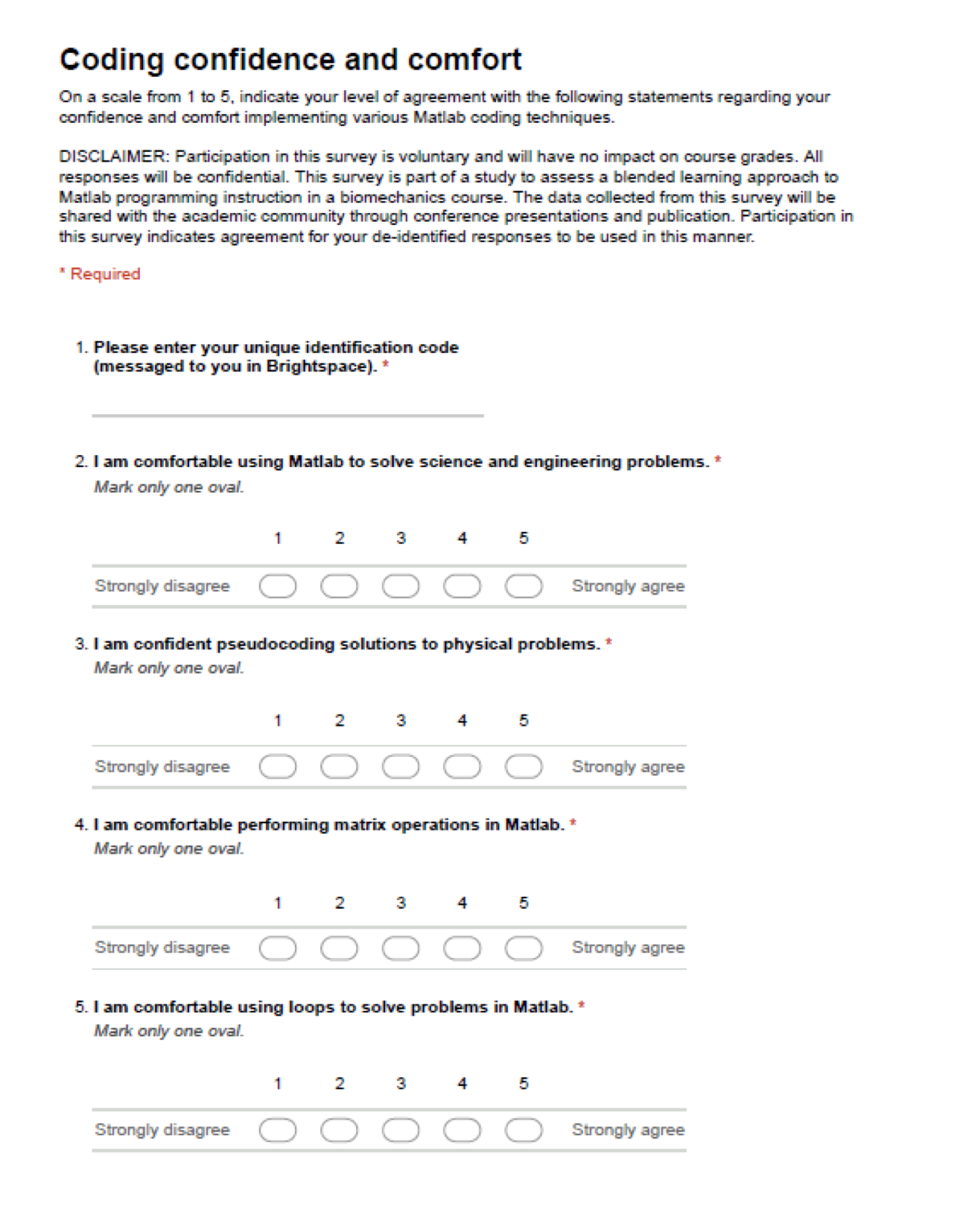 Figure 3. Coding confidence survey
Figure 3. Coding confidence survey
Coding competence
Concurrent with student’s confidence, we were also eager to learn if their coding skill changed between blended and traditional classes. To test this, we collected assignment submissions from past traditional classes as well as from the blended class. Previous teaching assistants in the course who were familiar with the project were then asked to perform a blinded regrade from the different courses. In order to obtain a holistic assessment of the different student’s coding ability, we used a modified version of a coding rubric developed by Assistant Professor of Computer Science Shelby Kimmel of Middlebury College. (http://shelbykimmel.com/Documents/Teaching/Templates/ProgramGrading.pdf). The graders were asked to assess the correctness, readability, documentation, elegance, and specifications of the code (fig. 4). After grading the assignments were re-binned into class types and analyzed to see if there was any difference in coding competence.
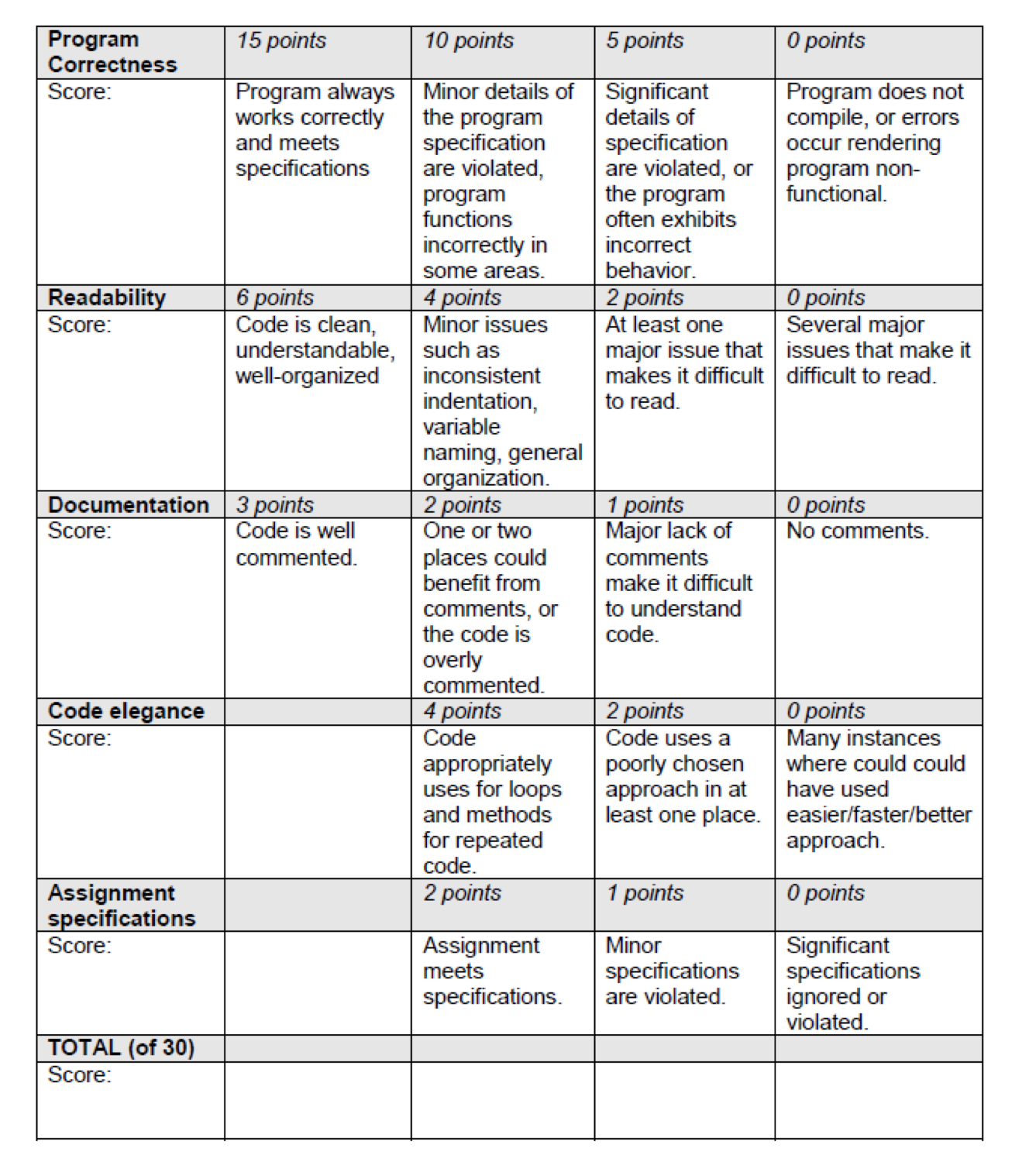 Figure 4. Coding competence blind regrade rubric
Figure 4. Coding competence blind regrade rubric
Module + project effectiveness
We were also interested to learn if the students found the modules useful and effective in their learning. We also probed the students on if they preferred blended vs. traditional classrooms and how clear they found the assignment in its objectives. To do this we used a survey using a 5-point Likert scale (fig. 5). The survey was administered using Google Forms and was completed anonymously.
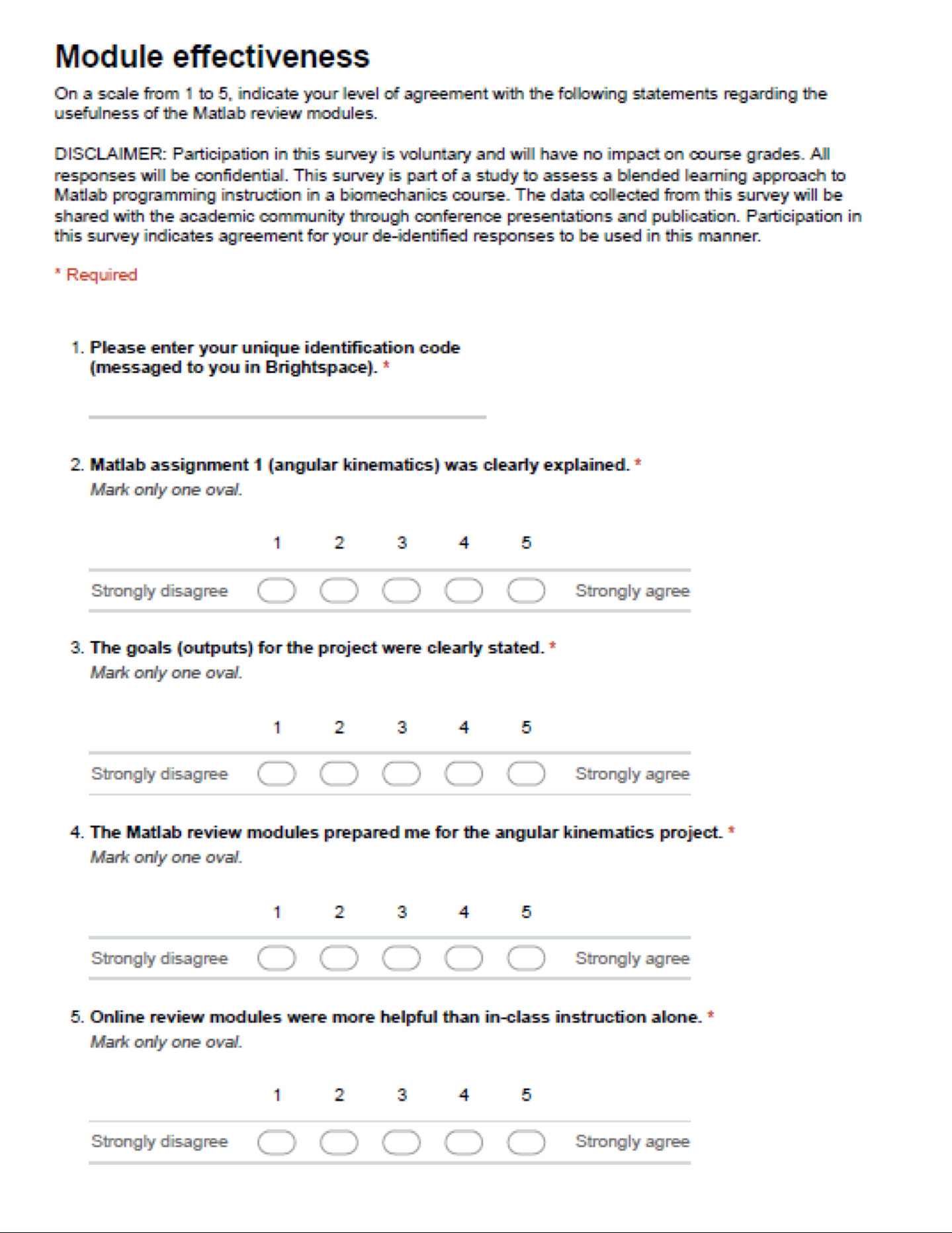 Figure 5. Blended class effectiveness survey
Figure 5. Blended class effectiveness survey
Results
This study was performed during the fall 2019 (traditional) and spring 2020 (blended) semesters. Coding confidence was assessed post-assignment in the traditional class. Confidence was tracked pre- and post-assignment in the blended class. Coding confidence was assessed pre- and post-assignment in the blended class to see if the modules and assignment improved confidence over the course of the semester. Students who completed the modules and assignment received the effectiveness survey. Coding competence was assessed from students who completed the assignment in traditional and blended classes (table 2).
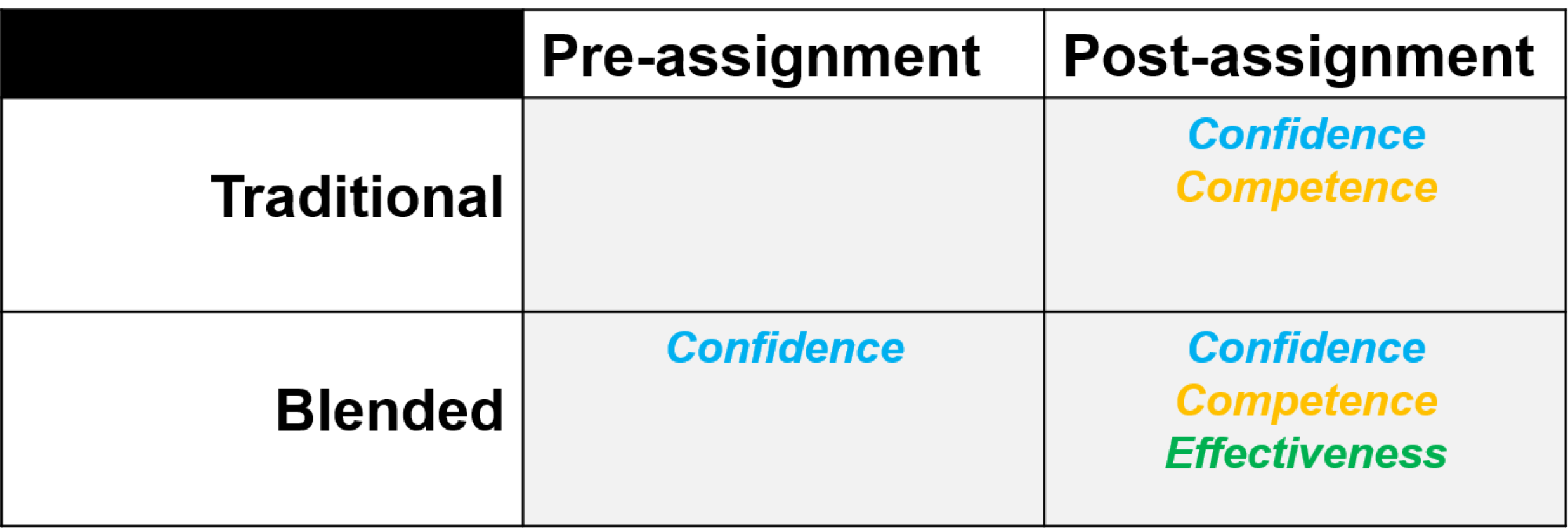 Table 2. Data collection strategy
Table 2. Data collection strategy
The modules and programming assignment improve student coding confidence
Student confidence in MATLAB coding was significantly improved after completing the modules and programming assignment compared to before. This confidence increase was also true across each specific skill that is emphasized in the modules and assignment (fig. 6).
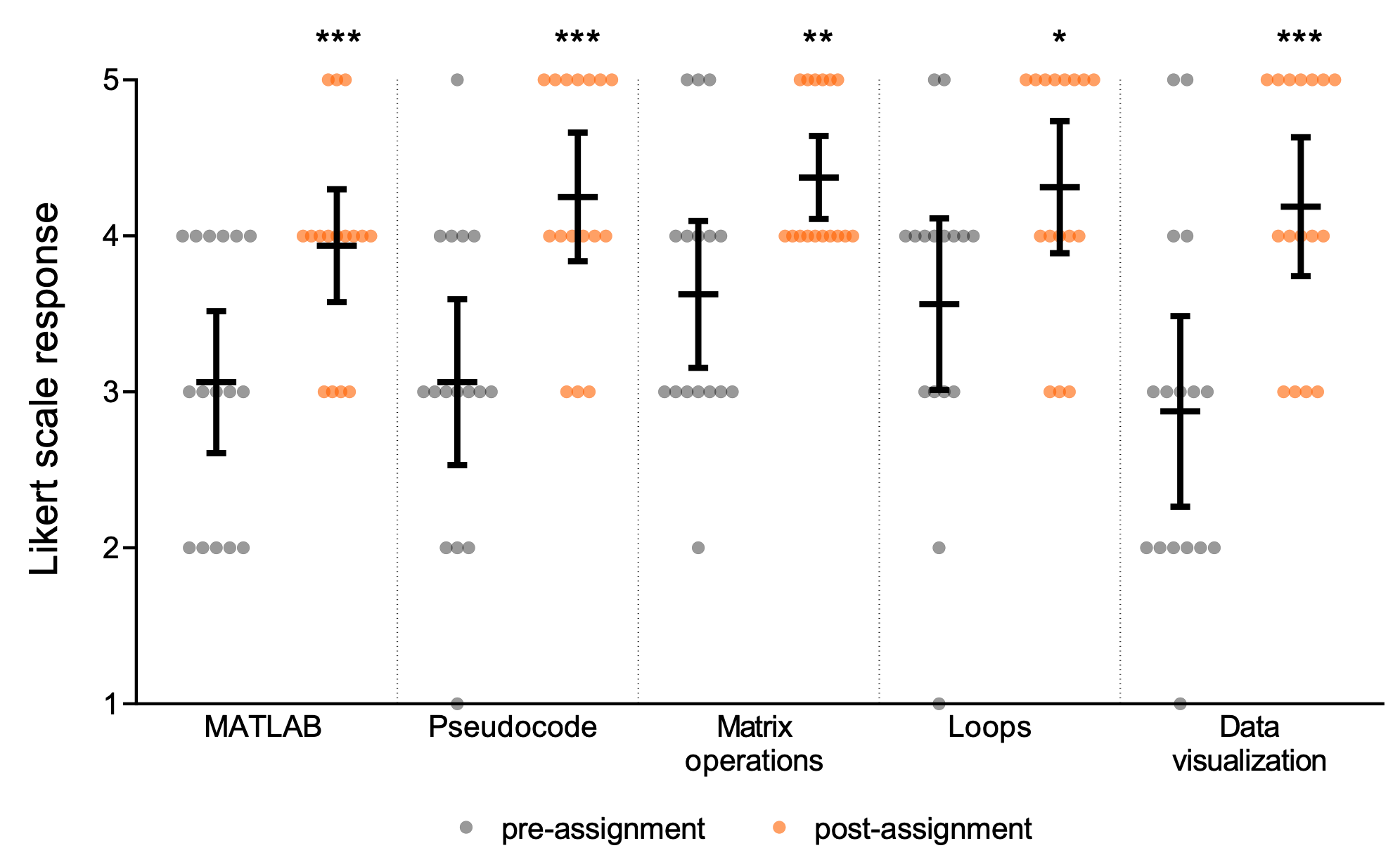 Figure 6. Student confidence is higher after completing module and MATLAB project
Figure 6. Student confidence is higher after completing module and MATLAB project
Students in the blended course rated as more confident in fundamental MATLAB skills than traditional
Student confidence in MATLAB and various coding techniques was assessed after project completion in traditional and blended classes. Confidence trended higher in each category in blended class compared to traditional. Confidence in matrix operations and loops was significantly higher in the blended class at the p<0.05 threshold and confidence in data visualization was improved in the blended class at the p<0.1 threshold (fig. 7).
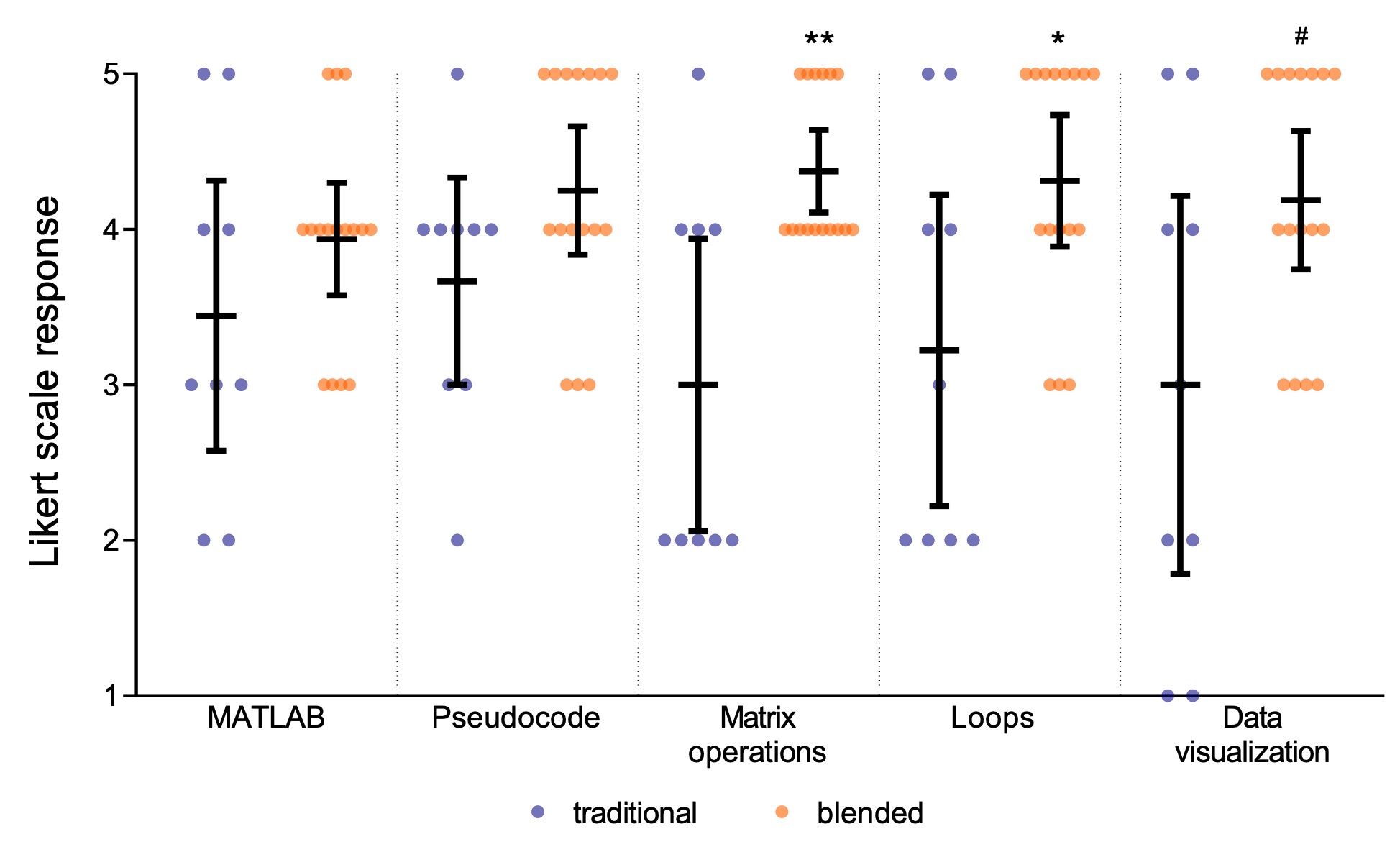 Figure 7. Blended class tended to rate confidence higher than traditional
Figure 7. Blended class tended to rate confidence higher than traditional
Assignment quality was similar but students from the blended class tended to have higher code readability
Coding competence was assessed using a blinded regrade by previous course teaching assistants. Scores were largely similar between the groups. However, student code from the blended course was rated slightly more readable at the p<0.1 threshold (fig. 8).
 Figure 8. Code readability is improved in blended class in blinded regrade
Figure 8. Code readability is improved in blended class in blinded regrade
Using a video assignment statement was helpful for assignment clarity and goals but student reception to blended classroom was mixed
To address student difficulty understanding the programming assignment and goals the assignment was switched to a video format from the original text. A majority of students rated video as useful or neutral in understanding the assignment. Similarly, most students found the assignment and goals clear or neutral. Interestingly, students were mixed on the perceived effectiveness of the blended module in delivering programming content compared to a traditional classroom. A higher proportion of students disagreed with online modules being more useful than in class instruction alone (fig. 9).
 Figure 9. Students receptiveness to blended classroom was mixed
Figure 9. Students receptiveness to blended classroom was mixed
Students were mixed on module effectiveness and generally found review and mini-assignments more helpful than reflective discussion
Students were polled to determine which components of the modules were most and least useful preparation for the MATLAB assignment. Responses were mixed regarding overall usefulness with responses fairly even across the spectrum. Mini-assignments were generally considered most helpful. Review materials were mixed skewing towards less helpful and very few students found completing reflective prompts to be helpful preparation (fig. 10).
 Figure 10. Students were mixed on the module usefulness in preparing for the MATLAB project
Figure 10. Students were mixed on the module usefulness in preparing for the MATLAB project
Discussion
A blended model was used to re-configure programming content delivery in an introductory biomechanics class in the biomedical engineering undergraduate curriculum at Vanderbilt University. The traditional, lecture-based model was replaced with online modules consisting of review materials, mini-assignments, and reflective prompts. The module was followed by a MATLAB programming project. Student coding confidence was surveyed in a traditional and blended class. Coding competence was assessed in traditional and blended classes using a blinded regrade method using previous course teaching assistants. The effectiveness of the modules was determined using a survey in the blended class. Results indicate the modules and assignment help improved coding confidence across the board in the blended class. Students in the blended course also tend to be more confident in MATLAB coding, particularly in using matrix operations, loops, and visualizing data. There is some evidence that code from students in the blended class tends to have greater readability than those from the traditional class. These results indicate that programming content helps improve student confidence and a blended model further improves confidence over traditional instruction and may improve coding competence as well. While the assignment was clear and a video assignment style can improve over paper-based methods, reception of the modules and blended style was mixed by the students. Particularly, students did not find review materials or reflective discussion to be useful in completing the MATLAB assignment. Providing mini-assignments centered on specific coding techniques may be the most useful and best received method of introducing a blended classroom into these teaching contexts.
In conclusion, the results from this study indicate that MATLAB coding projects can improve student coding confidence in early major classes. Using a blended approach can potentially augment this improved confidence and lead to improved coding skill, particularly in coding readability.


